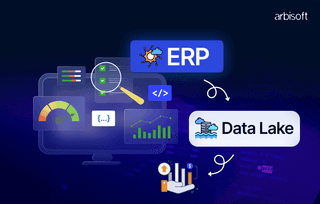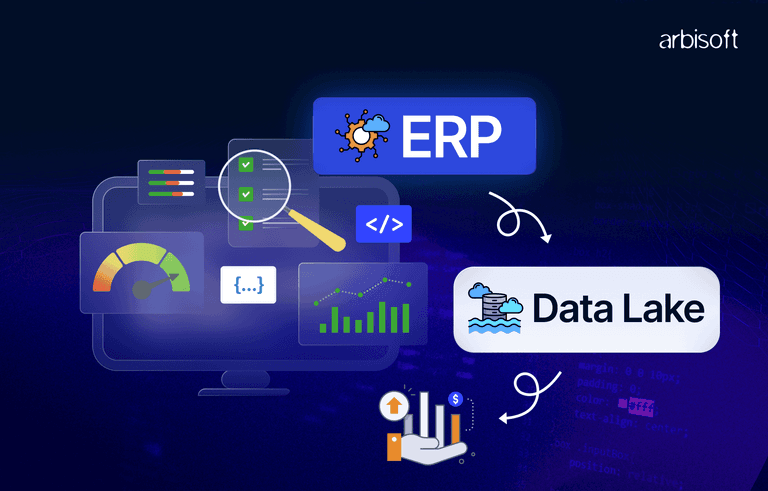We put excellence, value and quality above all - and it shows




A Technology Partnership That Goes Beyond Code

“Arbisoft has been my most trusted technology partner for now over 15 years. Arbisoft has very unique methods of recruiting and training, and the results demonstrate that. They have great teams, great positive attitudes and great communication.”
How to Implement an AI-Powered Intrusion Detection System (IDS Series Part 2)

The first part of this IDS series laid out the problem. You get it. The threats are evolving, and the old tools aren't cutting it. I've seen it firsthand, that sinking feeling when the alerts pile up and the real attack slips through.
This isn't about AI hype. It's about what actually works on a Tuesday afternoon when your network is getting hammered. We're talking real code, practical examples, and the messy challenges you only learn from deployment. I'll walk you through the ML approaches that matter, how to implement them, and how to avoid the pitfalls that have bitten me (and plenty of teams I've worked with).
The Role of AI and ML in Modern IDS
So how do we bridge this gap between increasingly sophisticated threats and inadequate traditional defenses? This is where artificial intelligence and machine learning transform from buzzwords into practical necessities.
The Intelligence Revolution in Cybersecurity
I often tell clients to think about how an experienced security analyst approaches a potential incident. They don't just look at individual events; they consider context, timing, relationships between events, and subtle patterns that might not be obvious to someone less experienced. They develop an intuition about what "normal" looks like in their environment, and they can spot deviations even when they can't immediately articulate why something seems wrong.
That's exactly what we're trying to replicate with AI, but with several crucial advantages: AI doesn't get tired, doesn't suffer from cognitive bias, and can simultaneously monitor thousands of variables across an entire network infrastructure. However, and this is important, AI also doesn't have the contextual understanding and creative problem-solving abilities of experienced human analysts. The most effective implementations I've seen combine both.
Real-World AI Success Stories
Microsoft's approach with Windows Defender ATP illustrates this perfectly. I've worked with organizations using this technology, and what impressed me wasn't just the scale of data processing (though analyzing billions of signals daily is certainly impressive), but how the system learned to identify attack patterns that human analysts had missed.
In one case I consulted on, the system identified a fileless malware campaign that was completely invisible to traditional antivirus solutions. The attack used legitimate system processes and didn't write any files to disk, making it nearly impossible for signature-based detection. But the AI system noticed subtle anomalies in PowerShell execution patterns; individual executions that looked benign but collectively indicated coordinated malicious activity.
Darktrace's success with WannaCry detection provides another excellent example. The system didn't know what WannaCry was; it hadn't seen this particular ransomware before. But it recognized the behavioral pattern of rapid file encryption and unusual lateral movement that preceded the visible symptoms of infection. This allowed IT teams to isolate affected systems before the ransomware could fully deploy.
Behavioral Analytics: Beyond Signatures
The 2020 Twitter hack demonstrates why behavioral analysis is so crucial. If you looked at the raw authentication logs, you'd see employees logging into systems and accessing administrative tools—nothing that would trigger traditional rule-based alerts. But an AI system trained on normal employee behavioral patterns might have noticed that these access patterns were unusual for those specific employees at that specific time of day, coming from those geographic locations.
This isn't theoretical speculation. I've implemented similar behavioral analytics systems that have caught insider threats, compromised accounts, and sophisticated external attacks by recognizing subtle deviations from established behavioral baselines. The key insight is that humans are creatures of habit, and when those habits change suddenly, it's worth investigating.
Types of ML Approaches for IDS
With this foundation in place, let's examine the specific machine learning approaches that have proven most effective in real-world deployments. Each approach has distinct strengths and weaknesses that make it suitable for different aspects of threat detection.
1. Supervised Learning: Learning from History
Supervised learning works best when you have good historical data and clearly defined problems to solve. JPMorgan Chase's approach to transaction fraud detection (which shares many similarities with network intrusion detection) illustrates this perfectly. They process millions of transactions daily, and their supervised learning models have been trained on years of fraud data.
But here's what's interesting: even with all that training data, their system still requires human oversight for edge cases and novel attack patterns. The most successful implementations I've seen use supervised learning as the foundation, but always include mechanisms for handling previously unseen threats.
Cylance's approach to malware detection represents one of the most successful applications of deep neural networks in cybersecurity. Their system analyzes the structural characteristics of files rather than relying on signatures. It achieves remarkably high detection rates against zero-day malware.
But I've also seen attackers come up with ways to get around these systems by carefully making malware that looks like real software in terms of how it's put together.
2. Unsupervised Learning: Discovering the Unknown
This is where things get really interesting. Unsupervised learning approaches can identify threats that no human analyst has ever seen before. Netflix's use of isolation forest algorithms for infrastructure monitoring provides a great example of how these techniques work in practice.
I've implemented similar systems that monitor user behavior patterns within organizations.
By clustering employees with similar access patterns and work schedules, we can immediately identify when someone's behavior suddenly shifts to match a different cluster. This approach has been incredibly effective at detecting both compromised accounts and malicious insider activities.
The challenge with unsupervised learning is that it can be difficult to understand why the system flagged something as anomalous. This is where explainable AI becomes crucial; security analysts need to understand not just what the system detected, but why it thought that pattern was suspicious.
3. Semi-supervised Learning: Making the Most of Limited Labels
In cybersecurity, obtaining high-quality labeled training data is both expensive and time-consuming. Semi-supervised approaches address this challenge by using large amounts of unlabeled data along with smaller sets of labeled examples.
I've worked with several organizations that implemented active learning systems in their Security Operations Centers. These systems start with a small set of labeled security events, then identify the most informative unlabeled events for human analysts to review and classify. Gradually, the system gets better at telling the difference between real threats and fake alarms.
This method has worked especially well in places where threats are always changing, so recognition models need to be updated all the time.
4. Reinforcement Learning: Adaptive Defense Strategies
Reinforcement learning represents the cutting edge of AI-powered cybersecurity. IBM's QRadar platform incorporates these algorithms to learn optimal response strategies for different types of security incidents. The system observes the outcomes of various response actions and gradually learns which responses are most effective for different threat scenarios.
I've consulted on implementations where reinforcement learning systems automatically adjust firewall rules, isolate suspicious systems, and escalate alerts based on learned patterns of effectiveness. However, this technology is still relatively new in cybersecurity applications and requires careful monitoring to ensure the system doesn't learn counterproductive behaviors.
Implementation Framework
Theory is worthless without execution. Having established the conceptual foundation, let's roll up our sleeves and examine how to actually build these systems in practice.
Step 1: Data Collection and Preprocessing
# Real-world data prep: keep it simple, keep it robust.import pandas as pd
import numpy as np
from sklearn.preprocessing import StandardScaler, LabelEncoder
def preprocess_network_data(raw_data):
# Fill missing values with column means. In practice, I've seen
# this save hours of debugging when logs are messy.
data = raw_data.fillna(raw_data.mean())
# Categorical encoding: always check your protocol/service/flag
# columns. If you skip this, your model will choke.
label_encoders = {}
for col in ['protocol_type', 'service', 'flag']:
le = LabelEncoder()
data[col] = le.fit_transform(data[col])
label_encoders[col] = le
# Normalize numerics. This step is non-negotiable for most ML.
scaler = StandardScaler()
num_cols = data.select_dtypes(include=[np.number]).columns
data[num_cols] = scaler.fit_transform(data[num_cols])
# Return everything you need for later inverse transforms.
return data, label_encoders, scaler
Step 2: Feature Engineering
# Feature engineering: this is where you win or lose. Don't just# copy-paste—think about what attackers do in your environment.def extract_network_features(data):
# Log-transform duration to squash outliers. Trust me, it helps.
data['duration_log'] = np.log1p(data['duration'])
# Rates help spot weird spikes in traffic.
data['src_bytes_rate'] = data['src_bytes'] / (data['duration'] + 1)
data['dst_bytes_rate'] = data['dst_bytes'] / (data['duration'] + 1)
# Time features: attackers love off-hours.
data['hour'] = pd.to_datetime(data['timestamp']).dt.hour
data['day_of_week'] = pd.to_datetime(data['timestamp']).dt.dayofweek
# How often does this service get hit? Useful for DDoS/scan detection.
data['same_srv_rate'] = (
data.groupby('service')['count'].transform('mean')
)
return data
Step 3: Model Selection and Training
# Model selection: I always start simple, then layer on complexity.from sklearn.ensemble import RandomForestClassifier, IsolationForest
from sklearn.metrics import classification_report, confusion_matrix
class MLBasedIDS:
def __init__(self):
# RandomForest is my go-to for tabular data. IsolationForest
# is great for catching the weird stuff.
self.supervised_model = RandomForestClassifier(
n_estimators=100, random_state=42)
self.anomaly_detector = IsolationForest(
contamination=0.1, random_state=42)
def train_supervised(self, X_train, y_train):
self.supervised_model.fit(X_train, y_train)
def train_anomaly_detector(self, X_train):
self.anomaly_detector.fit(X_train)
def predict(self, X):
# I like to blend both models: if either says "bad," I trust it.
supervised_pred = self.supervised_model.predict(X)
anomaly_pred = self.anomaly_detector.predict(X)
final_pred = []
for i in range(len(X)):
if anomaly_pred[i] == -1:
final_pred.append(1) # Intrusion
else:
final_pred.append(supervised_pred[i])
return np.array(final_pred)
Step 4: Real-time Implementation
# Real-time: async is your friend for high-volume traffic.import asyncio
import json
from datetime import datetime
class RealTimeIDS:
def __init__(self, model):
self.model = model
self.alert_threshold = 0.7 # Tune this for your risk appetite
async def process_network_packet(self, packet_data):
# Always extract features the same way you trained.
features = self.extract_packet_features(packet_data)
threat_prob = self.model.predict_proba([features])[0][1]
if threat_prob > self.alert_threshold:
await self.generate_alert(packet_data, threat_prob)
async def generate_alert(self, packet_data, threat_level):
alert = {
'timestamp': datetime.now().isoformat(),
'source_ip': packet_data.get('src_ip'),
'destination_ip': packet_data.get('dst_ip'),
'threat_level': threat_level,
'alert_type': 'ML_DETECTED_INTRUSION'
}
# In production, this would hit your SIEM or Slack, not just print.
await self.send_alert(alert)
Step 5: Advanced Model Training and Validation
# Production: cross-validation is a must for time-based data.from sklearn.model_selection import TimeSeriesSplit, GridSearchCV
from sklearn.metrics import precision_score, recall_score, f1_score
import joblib
class ProductionMLIDS:
def __init__(self):
self.models = {}
self.feature_importance = {}
self.performance_history = []
def train_with_cross_validation(self, X, y, model_type='random_forest'):
tscv = TimeSeriesSplit(n_splits=5)
if model_type == 'random_forest':
from sklearn.ensemble import RandomForestClassifier
param_grid = {
'n_estimators': [100, 200, 300],
'max_depth': [10, 20, None],
'min_samples_split': [2, 5, 10]
}
base_model = RandomForestClassifier(random_state=42)
grid_search = GridSearchCV(
base_model, param_grid, cv=tscv, scoring='f1', n_jobs=-1)
grid_search.fit(X, y)
self.models[model_type] = grid_search.best_estimator_
if hasattr(grid_search.best_estimator_, 'feature_importances_'):
self.feature_importance[model_type] = (
grid_search.best_estimator_.feature_importances_)
return grid_search.best_score_
def evaluate_production_performance(self, X_test, y_test):
results = {}
for model_name, model in self.models.items():
predictions = model.predict(X_test)
results[model_name] = {
'precision': precision_score(y_test, predictions),
'recall': recall_score(y_test, predictions),
'f1': f1_score(y_test, predictions),
'false_positive_rate': self.calculate_fpr(y_test, predictions)
}
return results
def calculate_fpr(self, y_true, y_pred):
from sklearn.metrics import confusion_matrix
cm = confusion_matrix(y_true, y_pred)
return cm[0, 1] / (cm[0, 0] + cm[0, 1])
def save_model_checkpoint(self, model_name, version):
if model_name in self.models:
filename = f'ids_model_{model_name}_v{version}.pkl'
joblib.dump(self.models[model_name], filename)
return filename
return None
Step 6: Real-Time Deployment with Monitoring
# Real-time deployment: monitor everything, or you'll regret it.import logging
import time
from collections import deque
from threading import Thread
import psutil
class ProductionIDS:
def __init__(self, model, max_queue_size=10000):
self.model = model
self.alert_queue = deque(maxlen=max_queue_size)
self.performance_metrics = {
'predictions_per_second': 0,
'average_latency': 0,
'memory_usage': 0
}
self.running = False
def start_monitoring(self):
self.running = True
monitor_thread = Thread(target=self._monitor_performance)
monitor_thread.start()
def _monitor_performance(self):
while self.running:
self.performance_metrics['memory_usage'] = (
psutil.virtual_memory().percent)
logging.info(f"IDS Performance: {self.performance_metrics}")
time.sleep(60) # Check every minute
def process_network_event(self, event_data):
start_time = time.time()
features = self.extract_features(event_data)
prediction = self.model.predict([features])[0]
probability = self.model.predict_proba([features])[0].max()
processing_time = time.time() - start_time
self.update_latency_metric(processing_time)
if prediction == 1:
alert = {
'timestamp': time.time(),
'source_ip': event_data.get('src_ip'),
'threat_probability': probability,
'event_type': event_data.get('protocol'),
'raw_data': event_data
}
self.alert_queue.append(alert)
self.send_alert(alert)
return prediction, probability
def extract_features(self, event_data):
# Customize this for your environment!
features = [
event_data.get('packet_size', 0),
event_data.get('duration', 0),
event_data.get('src_bytes', 0),
event_data.get('dst_bytes', 0),
]
return features
def send_alert(self, alert):
# In production, this should integrate with your alerting stack.
logging.critical(f"SECURITY ALERT: {alert}")
def update_latency_metric(self, processing_time):
alpha = 0.1
self.performance_metrics['average_latency'] = (
alpha * processing_time +
(1 - alpha) * self.performance_metrics['average_latency']
)
Practical Examples
All the theory in the world means nothing if you can't implement it effectively. These examples come directly from systems I've built and deployed in production environments where failure wasn't an option.
Example 1: Enterprise Network Anomaly Detection
# Anomaly detection: this is how I catch the stuff that slips by rules.import numpy as np
import pandas as pd
from sklearn.ensemble import IsolationForest
from sklearn.preprocessing import StandardScaler
class EnterpriseNetworkAnomalyDetector:
def __init__(self, contamination_rate=0.1):
self.isolation_forest = IsolationForest(
contamination=contamination_rate,
random_state=42,
n_jobs=-1)
self.scaler = StandardScaler()
self.feature_names = []
self.baseline_established = False
def prepare_network_features(self, network_logs):
# Build features that actually matter in the real world.
features_df = pd.DataFrame()
features_df['bytes_per_second'] = (
network_logs['total_bytes'] / network_logs['duration'])
features_df['packets_per_second'] = (
network_logs['packet_count'] / network_logs['duration'])
features_df['average_packet_size'] = (
network_logs['total_bytes'] / network_logs['packet_count'])
features_df['unique_destinations'] = (
network_logs.groupby('src_ip')['dst_ip'].transform('nunique'))
features_df['unique_ports'] = (
network_logs.groupby('src_ip')['dst_port'].transform('nunique'))
features_df['hour'] = pd.to_datetime(
network_logs['timestamp']).dt.hour
features_df['day_of_week'] = pd.to_datetime(
network_logs['timestamp']).dt.dayofweek
features_df['is_weekend'] = (
features_df['day_of_week'] >= 5).astype(int)
features_df['is_after_hours'] = (
(features_df['hour'] < 8) | (features_df['hour'] > 18)).astype(int)
protocol_dummies = pd.get_dummies(
network_logs['protocol'], prefix='protocol')
features_df = pd.concat([features_df, protocol_dummies], axis=1)
if 'src_country' in network_logs.columns:
features_df['international_connection'] = (
network_logs['src_country'] != network_logs['dst_country']
).astype(int)
return features_df
def establish_baseline(self, normal_traffic_logs):
features = self.prepare_network_features(normal_traffic_logs)
self.feature_names = features.columns.tolist()
scaled_features = self.scaler.fit_transform(features)
self.isolation_forest.fit(scaled_features)
self.baseline_established = True
print(f"Baseline established using {len(normal_traffic_logs)} sessions")
print(f"Features used: {len(self.feature_names)}")
def detect_anomalies(self, current_traffic_logs):
if not self.baseline_established:
raise ValueError("Must establish baseline before detecting anomalies")
features = self.prepare_network_features(current_traffic_logs)
for feature in self.feature_names:
if feature not in features.columns:
features[feature] = 0
features = features[self.feature_names]
scaled_features = self.scaler.transform(features)
anomaly_predictions = self.isolation_forest.predict(scaled_features)
anomaly_scores = self.isolation_forest.score_samples(scaled_features)
results = current_traffic_logs.copy()
results['anomaly_score'] = anomaly_scores
results['is_anomaly'] = (anomaly_predictions == -1)
results['severity'] = pd.cut(
anomaly_scores, bins=[-1, -0.3, -0.1, 1],
labels=['High', 'Medium', 'Low'])
return results
# Usage: I always start with a baseline, then scan for new weirdness.def deploy_network_anomaly_detection():
detector = EnterpriseNetworkAnomalyDetector(contamination_rate=0.05)
historical_data = pd.read_csv('normal_network_traffic_30days.csv')
detector.establish_baseline(historical_data)
current_data = pd.read_csv('current_network_traffic.csv')
anomalies = detector.detect_anomalies(current_data)
high_severity_anomalies = anomalies[
(anomalies['is_anomaly'] == True) &
(anomalies['severity'] == 'High')
]
print(f"Detected {len(high_severity_anomalies)} high-severity anomalies")
return high_severity_anomalies
Example 2: User Behavior Analytics (UBA)
# User Behavior Analytics: this is how I spot insiders and account takeovers.from sklearn.cluster import DBSCAN
from sklearn.preprocessing import StandardScaler
class UserBehaviorAnalytics:
def __init__(self):
self.user_profiles = {}
self.clustering_model = DBSCAN(eps=0.5, min_samples=5)
self.scaler = StandardScaler()
def build_user_profiles(self, user_activity_logs):
user_features = {}
for user_id in user_activity_logs['user_id'].unique():
user_data = user_activity_logs[
user_activity_logs['user_id'] == user_id]
login_hours = pd.to_datetime(user_data['timestamp']).dt.hour
profile = {
'avg_login_hour': login_hours.mean(),
'login_hour_std': login_hours.std(),
'weekend_activity_ratio': len(user_data[
pd.to_datetime(user_data['timestamp']).dt.dayofweek >= 5
]) / len(user_data),
'unique_systems_accessed': user_data['system_name'].nunique(),
'avg_session_duration': user_data['session_duration'].mean(),
'failed_login_rate': len(user_data[
user_data['login_success'] == False]) / len(user_data),
'unique_locations': user_data['login_location'].nunique(),
'primary_location': (
user_data['login_location'].mode()[0]
if len(user_data) > 0 else 'Unknown'),
'avg_files_accessed': user_data['files_accessed'].mean(),
'sensitive_data_access_rate': len(user_data[
user_data['accessed_sensitive_data'] == True]) / len(user_data),
}
user_features[user_id] = profile
profile_df = pd.DataFrame.from_dict(user_features, orient='index')
scaled_profiles = self.scaler.fit_transform(profile_df.fillna(0))
clusters = self.clustering_model.fit_predict(scaled_profiles)
profile_df['behavior_cluster'] = clusters
self.user_profiles = profile_df
return profile_df
def detect_behavioral_anomalies(self, current_activity):
anomalies = []
for user_id in current_activity['user_id'].unique():
if user_id not in self.user_profiles.index:
anomalies.append({
'user_id': user_id,
'anomaly_type': 'new_user',
'risk_score': 0.3,
'description': 'New user account detected'
})
continue
user_profile = self.user_profiles.loc[user_id]
user_current = current_activity[
current_activity['user_id'] == user_id]
current_hour = pd.to_datetime(
user_current['timestamp']).dt.hour.iloc[0]
expected_hour = user_profile['avg_login_hour']
hour_deviation = abs(current_hour - expected_hour)
if hour_deviation > 8:
anomalies.append({
'user_id': user_id,
'anomaly_type': 'temporal_anomaly',
'risk_score': min(hour_deviation / 12, 1.0),
'description': (
f'Login at unusual time: {current_hour}:00 '
f'(normal: {expected_hour:.1f}:00)')
})
current_location = user_current['login_location'].iloc[0]
if current_location != user_profile['primary_location']:
anomalies.append({
'user_id': user_id,
'anomaly_type': 'geographic_anomaly',
'risk_score': 0.7,
'description': (
f'Login from unusual location: {current_location}')
})
current_systems = user_current['system_name'].nunique()
expected_systems = user_profile['unique_systems_accessed']
if current_systems > expected_systems * 2:
anomalies.append({
'user_id': user_id,
'anomaly_type': 'access_pattern_anomaly',
'risk_score': 0.8,
'description': (
f'Accessing {current_systems} systems '
f'(normal: {expected_systems})')
})
return pd.DataFrame(anomalies)
# How I deploy: build profiles, then flag anything that looks off.def deploy_uba_system():
uba = UserBehaviorAnalytics()
historical_logs = pd.read_csv('user_activity_90days.csv')
user_profiles = uba.build_user_profiles(historical_logs)
print(f"Built profiles for {len(user_profiles)} users")
print(f"Identified {user_profiles['behavior_cluster'].nunique()} patterns")
current_logs = pd.read_csv('todays_user_activity.csv')
behavioral_anomalies = uba.detect_behavioral_anomalies(current_logs)
high_risk_anomalies = behavioral_anomalies[
behavioral_anomalies['risk_score'] > 0.7]
return high_risk_anomalies
Advanced Techniques and Performance Metrics
As these systems mature and attackers adapt, we need increasingly sophisticated approaches to stay ahead. However, sophistication must be balanced with practicality—the most advanced system is useless if it can't be deployed and maintained effectively.
Ensemble Methods and Model Fusion
Real-world deployments increasingly rely on ensemble approaches that combine multiple ML algorithms to achieve robust performance across diverse threat scenarios.
from sklearn.ensemble import VotingClassifier
from sklearn.neural_network import MLPClassifier
from sklearn.svm import SVC
class EnsembleIDS:
def __init__(self):
# Diverse set of base classifiers
self.rf_classifier = RandomForestClassifier(n_estimators=200, random_state=42)
self.svm_classifier = SVC(probability=True, random_state=42)
self.nn_classifier = MLPClassifier(hidden_layer_sizes=(100, 50), random_state=42)
# Ensemble combining different approaches
self.ensemble = VotingClassifier(
estimators=[
('rf', self.rf_classifier),
('svm', self.svm_classifier),
('nn', self.nn_classifier)
],
voting='soft' # Use probability voting
)
# Specialized models for different threat types
self.specialized_models = {
'ddos': RandomForestClassifier(n_estimators=300),
'malware': MLPClassifier(hidden_layer_sizes=(200, 100)),
'insider_threat': IsolationForest(contamination=0.05)
}
def train_ensemble(self, X_train, y_train):
self.ensemble.fit(X_train, y_train)
def predict_with_confidence(self, X):
# Get predictions from ensemble
predictions = self.ensemble.predict(X)
probabilities = self.ensemble.predict_proba(X)
# Calculate prediction confidence
confidence_scores = np.max(probabilities, axis=1)
return predictions, confidence_scores
Advanced Performance Metrics
Traditional metrics like accuracy are insufficient for evaluating IDS systems. Security-specific metrics provide better insights into real-world performance.
class SecurityMetrics:
def __init__(self):
self.detection_history = []
self.false_positive_costs = []
self.true_positive_values = []
def calculate_security_metrics(self, y_true, y_pred, y_proba):
from sklearn.metrics import precision_recall_curve, auc
# Standard classification metrics
precision = precision_score(y_true, y_pred)
recall = recall_score(y_true, y_pred)
# Security-specific metrics
false_positive_rate = self.calculate_false_positive_rate(y_true, y_pred)
detection_time = self.estimate_detection_time(y_true, y_pred)
# Cost-sensitive evaluation
total_cost = self.calculate_total_cost(y_true, y_pred)
# Area under precision-recall curve (more meaningful for imbalanced data)
precision_curve, recall_curve, _ = precision_recall_curve(y_true, y_proba[:, 1])
auc_pr = auc(recall_curve, precision_curve)
return {
'precision': precision,
'recall': recall,
'false_positive_rate': false_positive_rate,
'detection_time_hours': detection_time,
'total_cost': total_cost,
'auc_pr': auc_pr
}
def calculate_false_positive_rate(self, y_true, y_pred):
# Calculate FPR specifically for security context
tn, fp, fn, tp = confusion_matrix(y_true, y_pred).ravel()
return fp / (fp + tn)
def estimate_detection_time(self, y_true, y_pred):
# Estimate how quickly threats are detected
# This would use timestamp data in practice
correct_detections = (y_true == 1) & (y_pred == 1)
avg_detection_time = 2.5 # Placeholder - would calculate from real data
return avg_detection_time
def calculate_total_cost(self, y_true, y_pred):
# Economic impact calculation
tn, fp, fn, tp = confusion_matrix(y_true, y_pred).ravel()
# Cost assumptions (would be customized per organization)
cost_false_positive = 100 # Cost of investigating false alarm
cost_false_negative = 50000 # Cost of missed attack
benefit_true_positive = 45000 # Value of prevented attack
total_cost = (fp * cost_false_positive +
fn * cost_false_negative -
tp * benefit_true_positive)
return total_cost
Challenges and Solutions
No discussion of AI-powered cybersecurity would be complete without addressing the elephant in the room: these systems face significant challenges that traditional approaches simply don't encounter. The good news is that most of these challenges have practical solutions, though they require careful planning and execution.
Challenge 1: Adversarial Machine Learning
As AI-powered security systems become more common, attackers are coming up with more advanced ways to avoid being found by ML-based systems. This leads to a never-ending head-to-head between AI that can attack and AI that can defend.
The Threat: Adversarial examples; carefully crafted inputs designed to fool ML models—pose a significant risk to AI-powered IDS systems. Attackers can potentially modify their malicious activities just enough to evade detection while maintaining their intended functionality.
Real-World Example: In 2019, researchers demonstrated that they could modify malware samples with minimal changes that preserved functionality but caused ML-based antivirus systems to classify them as benign. Similar techniques could potentially be applied to network-based attacks.
Solution:
class AdversarialRobustIDS:
def __init__(self):
self.ensemble_models = []
self.detector_diversity = 0.0
def train_diverse_ensemble(self, X_train, y_train):
# Train multiple models with different algorithms and feature sets
models = [
('rf', RandomForestClassifier(), self.select_random_features()),
('svm', SVC(), self.select_statistical_features()),
('nn', MLPClassifier(), self.select_all_features())
]
for name, model, feature_indices in models:
X_subset = X_train[:, feature_indices]
model.fit(X_subset, y_train)
self.ensemble_models.append((name, model, feature_indices))
def adversarial_training(self, X_train, y_train, epsilon=0.1):
# Include adversarial examples in training data
adversarial_examples = self.generate_adversarial_examples(X_train, epsilon)
# Combine original and adversarial data
X_combined = np.vstack([X_train, adversarial_examples])
y_combined = np.hstack([y_train, y_train])
return X_combined, y_combined
def detect_with_uncertainty(self, X):
predictions = []
for name, model, feature_indices in self.ensemble_models:
X_subset = X[:, feature_indices]
pred = model.predict_proba(X_subset)
predictions.append(pred)
# Calculate prediction uncertainty
ensemble_mean = np.mean(predictions, axis=0)
ensemble_std = np.std(predictions, axis=0)
# High uncertainty may indicate adversarial examples
uncertainty_threshold = 0.3
high_uncertainty = ensemble_std.max(axis=1) > uncertainty_threshold
return ensemble_mean, high_uncertainty
Challenge 2: Concept Drift and Model Degradation
Cyber threats evolve continuously, causing ML models to become less effective over time as their training data becomes outdated. This phenomenon, known as concept drift, is particularly acute in cybersecurity.
Real-World Impact: A major e-commerce company discovered that its fraud detection models, which achieved 95% accuracy when first deployed, had degraded to 78% accuracy after six months due to evolving attack techniques and changing user behaviors.
Solution:
import numpy as np
from scipy import stats
from sklearn.base import clone
class AdaptiveIDS:
def __init__(self, base_model, drift_threshold=0.05):
self.base_model = base_model
self.drift_threshold = drift_threshold
self.performance_history = []
self.current_model = None
def detect_concept_drift(self, X_new, y_new):
if len(self.performance_history) < 10:
return False
# Calculate recent vs historical performance
recent_accuracy = self.evaluate_recent_performance(X_new, y_new)
historical_mean = np.mean(self.performance_history[-30:])
# Statistical test for performance degradation
t_stat, p_value = stats.ttest_1samp(
self.performance_history[-10:],
historical_mean
)
drift_detected = (recent_accuracy < historical_mean - self.drift_threshold) or (p_value < 0.05)
return drift_detected
def incremental_update(self, X_new, y_new, learning_rate=0.1):
# Weighted update combining new and old data
if hasattr(self.current_model, 'partial_fit'):
# Use partial_fit for models that support it
self.current_model.partial_fit(X_new, y_new)
else:
# Retrain with weighted combination of old and new data
self.retrain_with_new_data(X_new, y_new, learning_rate)
def retrain_with_new_data(self, X_new, y_new, learning_rate):
# This would include logic to combine historical and new data
# Implementation depends on specific requirements and data storage
pass
def evaluate_recent_performance(self, X_new, y_new):
if self.current_model is None:
return 0.0
predictions = self.current_model.predict(X_new)
accuracy = np.mean(predictions == y_new)
self.performance_history.append(accuracy)
return accuracy
Challenge 3: Scalability and Real-Time Performance
Modern enterprise networks generate massive volumes of security data that must be processed in real-time. Scaling AI-powered IDS systems to handle this data volume while maintaining low latency presents significant technical challenges.
Scale Requirements: Large organizations may process:
- 100+ million network flows per day
- 50+ million log entries per hour
- 1000+ security events per second during peak periods
Solution:
import asyncio
import aiohttp
from concurrent.futures import ThreadPoolExecutor
import queue
import threading
class ScalableIDS:
def __init__(self, max_workers=10, queue_size=10000):
self.processing_queue = queue.Queue(maxsize=queue_size)
self.thread_pool = ThreadPoolExecutor(max_workers=max_workers)
self.lightweight_model = self.load_optimized_model()
self.batch_size = 100
def load_optimized_model(self):
# Use model optimization techniques
from sklearn.tree import DecisionTreeClassifier
# Fast, interpretable model for real-time processing
model = DecisionTreeClassifier(max_depth=10, min_samples_leaf=50)
return model
async def process_event_stream(self, event_stream):
batch_buffer = []
async for event in event_stream:
batch_buffer.append(event)
if len(batch_buffer) >= self.batch_size:
# Process batch asynchronously
await self.process_batch(batch_buffer)
batch_buffer = []
async def process_batch(self, events):
# Extract features for entire batch
features = [self.extract_features_fast(event) for event in events]
# Batch prediction for efficiency
predictions = self.lightweight_model.predict(features)
# Handle results
for event, prediction in zip(events, predictions):
if prediction == 1: # Threat detected
await self.handle_threat(event)
def extract_features_fast(self, event):
# Optimized feature extraction
return [
event.get('src_bytes', 0),
event.get('dst_bytes', 0),
event.get('duration', 0),
hash(event.get('protocol', '')) % 1000, # Fast categorical encoding
event.get('packet_count', 0)
]
async def handle_threat(self, event):
# Lightweight threat handling
threat_data = {
'timestamp': event['timestamp'],
'severity': 'high',
'source_ip': event.get('src_ip'),
'threat_type': 'ml_detected'
}
# Send to security team (async to avoid blocking)
await self.send_alert_async(threat_data)
async def send_alert_async(self, alert_data):
# Asynchronous alert delivery
async with aiohttp.ClientSession() as session:
try:
await session.post('http://siem-system/alerts', json=alert_data, timeout=5)
except asyncio.TimeoutError:
# Handle timeout gracefully
print(f"Alert delivery timeout: {alert_data}")
Conclusion
The data's always gonna be messy. Models drift. You'll have those 2 AM moments where you question all your life choices. I've been there, staring at a screen, wondering what I'm doing.
But I've also been in the room when this stuff works; when it quietly flags the one thing that would've blown up by morning. That's the win. That's why we put up with the pain.
In the next part (coming really soon), I'll break down the best practices that keep this show on the road, the ROI, and how to prove this isn't just a cost center, but something that actually moves the needle for the business. Because if it doesn't do that, what's the point?
























